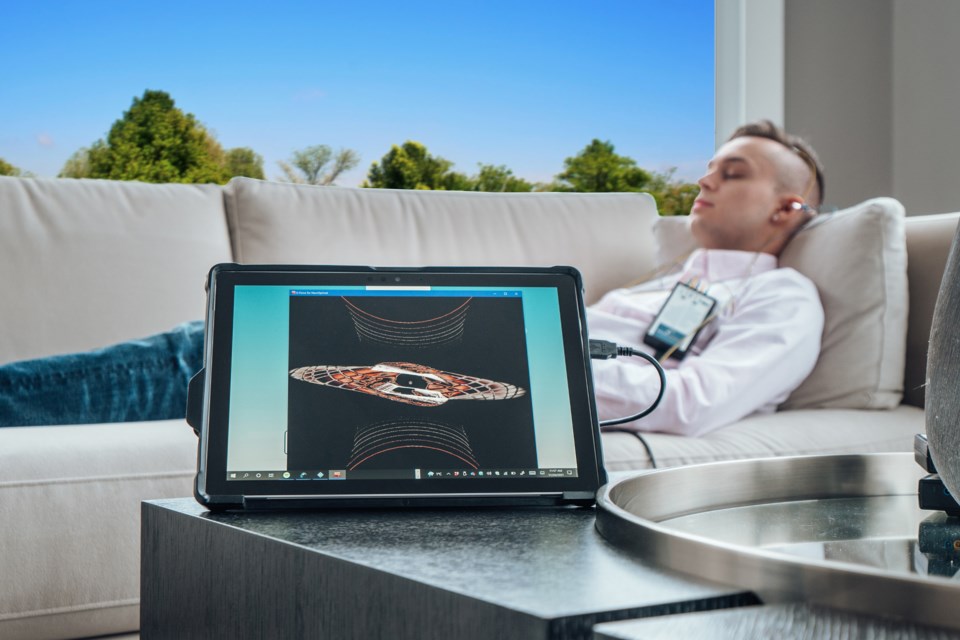Lifting your leg to get into your car and turning your head to check the blind spot are intentional actions done consciously, but there are other body functions like heart rate, digestion, and respiration that we don’t have to think about.
When under duress, whether from pain or stress, these involuntary body functions can change. In particular, the nervous, cardiovascular, and respiratory systems can be affected, resulting in your heart pounding, blood pressure rising, heart rate increasing, and breath quickening.
Biofeedback is a mind-body technique that can help you gain more control over these involuntary bodily functions. For example, if your breathing becomes rapid and shallow when anxious, learning deep breathing exercises that slow down the pace and deepen the breathing can help you feel calmer and more in control, so that your anxiety decreases.
“Neurofeedback is a type of biofeedback that helps clients change the electrical activity of their brains,” says Nigel Barnim, NeurOptimal® Neurofeedback trainer and owner of Hamilton Neurofeedback, located in Burlington.
The most common neurofeedback training protocol for reducing stress and anxiety rewards clients for producing more alpha brain waves, which are associated with calmness and relaxation, like the brain during meditation. By rewarding someone each time their brain activity produces more alpha waves, you can slowly increase the level of alpha waves they produce and, by extension, reduce their levels of stress and anxiety.
 During a neurofeedback session, clients sit comfortably in a chair, and sensors, which read the electrical activity of the brain, are attached to their head. Training sessions last around 30 minutes, during which time they listen to calming, meditative music. Each time the electrical activity of their brain deviates substantially from one moment to the next, the flow of the music is interrupted. By noticing these interruptions, the client’s brain learns to function with improved self-regulation, leading to a decrease in stress and anxiety.
During a neurofeedback session, clients sit comfortably in a chair, and sensors, which read the electrical activity of the brain, are attached to their head. Training sessions last around 30 minutes, during which time they listen to calming, meditative music. Each time the electrical activity of their brain deviates substantially from one moment to the next, the flow of the music is interrupted. By noticing these interruptions, the client’s brain learns to function with improved self-regulation, leading to a decrease in stress and anxiety.
“Rewards come in the form of visual or auditory signals, which occur when the brain functions in a desired way. For instance, when someone produces high levels of alpha waves, they may see a green checkmark on a computer screen or hear a bell ringing. During sessions, clients are simply told to make the green checkmark appear or make the bell ring. Over multiple sessions, the level of alpha waves required to trigger a reward is slowly increased, akin to raising the amount of weight one lifts at the gym. In this way, you can train the ability of a client’s brain to produce high levels of alpha waves on its own. It is genuinely stunning to me how good people are at controlling their internal states when they have a clear external signal,” said Barnim.



